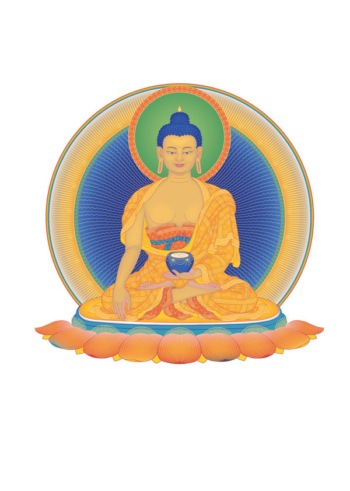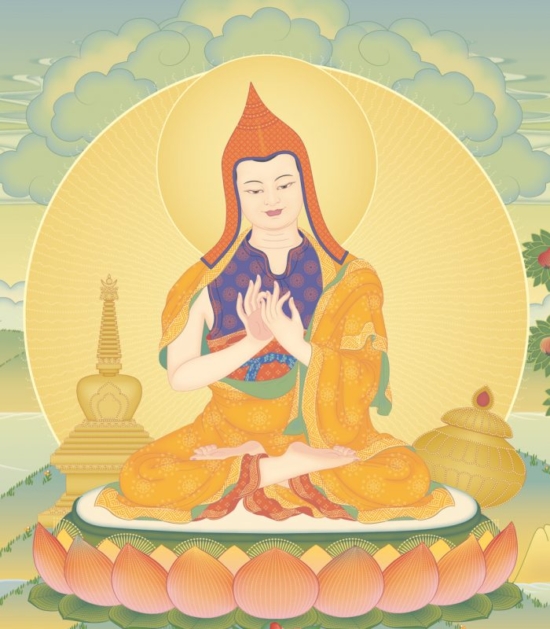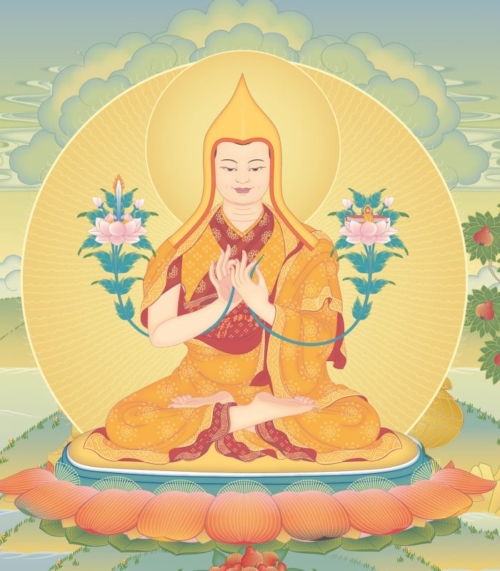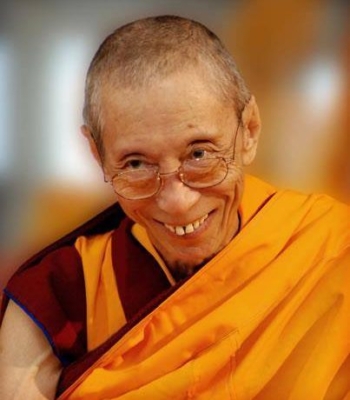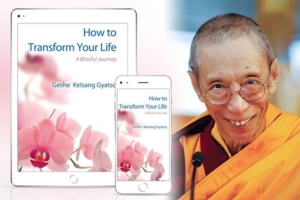The New Kadampa Tradition
Buddha Shakyamuni
INTRODUCTION TO BUDDHISM
The founder of Buddhism in this world was Buddha Shakyamuni, who lived and taught in India some 2,500 years ago. Since then millions of people around the world have followed the pure spiritual path he revealed.
Buddha’s principal motivation was to end the suffering of all living beings. Towards that end, he explored many of the spiritual paths available during his day. After spending several years practising in several different traditions, he concluded that none of the teachings of his time could lead to permanent liberation from suffering. He chose to meditate, and vowed not to arise from meditation until he discovered a method to end all suffering. After several days of intense meditation, he realized the true nature of phenomenon, specifically the true nature of suffering. He also realized a true method to end suffering.
If Buddha could have ended all suffering for all beings, he would have done so. However, he realized that we are all responsible for our own experience; indeed, we all create our own worlds. Therefore, it was not within his power to end our suffering directly. However, it was within his power to teach a valid method by which we could end our own suffering. So Buddha spent the remaining 45 years of life teaching.
Buddha explained that all our problems and suffering arise from confused and negative states of mind, and all our happiness and good fortune arise from peaceful and positive states of mind. He taught methods for gradually overcoming negative states of minds such as anger, jealousy and ignorance, and developing positive minds such as love, compassion and wisdom. If we choose to practise these methods sincerely, we will come to experience lasting peace and happiness.
These techniques work for anyone, in any country, at any age. Once we have gained experience of them for ourselves we can pass them on to others so they, too, can enjoy the same benefits.
Atisha
THE OLD KADAMPA LINEAGE UP TO THE PRESENT NEW KADAMPA TRADITION
Kadampa Buddhism is a Mahayana Buddhist school founded by the great Indian Buddhist Master Atisha (AD 982-1054).
His followers are known as ‘Kadampas’. Ka refers to Buddha’s teachings, and dam to Atisha’s special Lamrim instructions known as ‘the stages of the path to enlightenment’. Kadampas, then, are practitioners who regard Buddha’s teachings as personal instructions and put them into practice by following the instructions of Lamrim.
The Kadampa tradition was later promoted widely in Tibet by Je Tsongkhapa and his followers, who were known as the ‘New Kadampas’.
Transforming daily activities into the path
By integrating their knowledge of all Buddha’s teachings into their practice of Lamrim, and by integrating this into their everyday lives, Kadampa Buddhists are encouraged to use Buddha’s teachings as practical methods for transforming daily activities into the path to enlightenment.
The great Kadampa Teachers are famous not only for being great scholars but also for being spiritual practitioners of immense purity and sincerity.
Je Tsongkhapa
Lineage
The lineage of these teachings, both their oral transmission and blessings, was then passed from Teacher to disciple, spreading throughout much of Asia, and now to many countries throughout the western world.
Buddha’s teachings, which are known as ‘Dharma’, are likened to a wheel that moves from country to country in accordance with changing conditions and people’s karmic inclinations.
The external forms of presenting Buddhism may change as it meets with different cultures and societies, but its essential authenticity is ensured through the continuation of an unbroken lineage of realized practitioners.
Venerable Geshe Kelsang Gyatso Rinpoche
Modern Kadampa Buddhism
Through the activities and dedication of the renowned Buddhist Master, Venerable Geshe Kelsang Gyatso, Kadampa Buddhism has spread to many countries in recent years.
Geshe Kelsang has worked tirelessly to spread Kadampa Buddhism throughout the world by giving extensive teachings, writing many books on Kadampa Buddhism, establishing the International Temples Project and founding the New Kadampa Tradition, the International Kadampa Buddhist Union.

